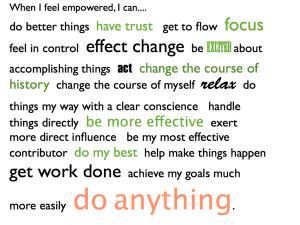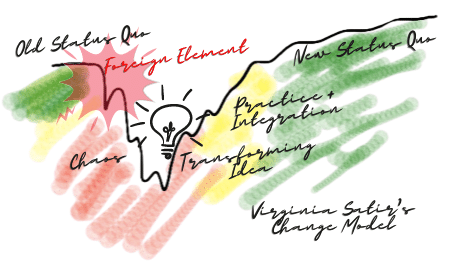I asked a group to complete this sentence: “When I feel empowered, I can__________.” Here’s how they filled in the blank.
When I feel empowered, I can…
- do better things
- have trust
- get to flow
- focus
- feel in control
- effect change
- be excited about accomplishing things
- act
- change the course of history
- change the course of myself
- relax
- do things my way with a clear conscience
- handle things directly
- be more effective
- exert more direct influence
- be my most effective contributor
- do my best
- help make things happen
- get work done
- achieve my goals much more easily
- do anything!
Read this aloud. Slowly. Let the words sink in.
Is this the way you’d like to work? Is this what you dream of when you think about the teams in your organization? Do you hope that people show this level of initiative and commitment in your organization?
Conditions for Empowerment
This doesn’t happen by declaring empowerment. It doesn’t happen through empowerment programs.
Empowerment happens when the organization creates the conditions for it. It happens when people understand how their work fits in with the big picture. When they know the value proposition of the products they work on, how the company fits in the market, and how their product contributes to revenue.
It happens when teams have what they need to do their work, and the organization supports collaborative work. Empowerment happens when work flows in the teams smoothly, hand-offs and dependencies are kept to a minimum.
It happens when teams have the autonomy to organize their own work, choose their own methods. When teams know their decision boundaries, and have the contextual knowledge to make good decisions close to the work the will.
If you’d like to learn about how well your organization is supporting the conditions for true empowerment, download the mini-assessment. Then let’s talk.










Move A Mountain
Change the world!
act, based clear constrains, my experience and my context.